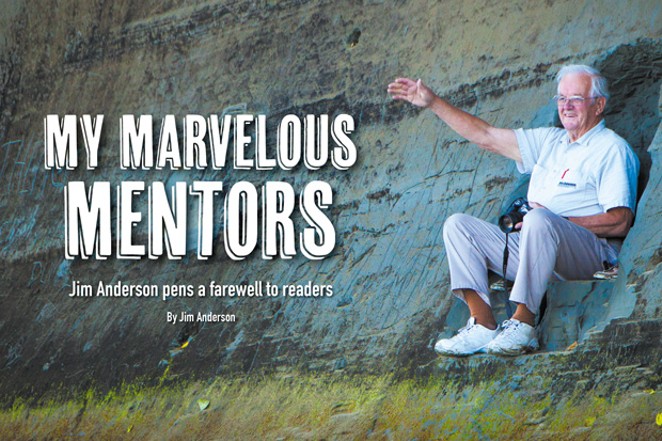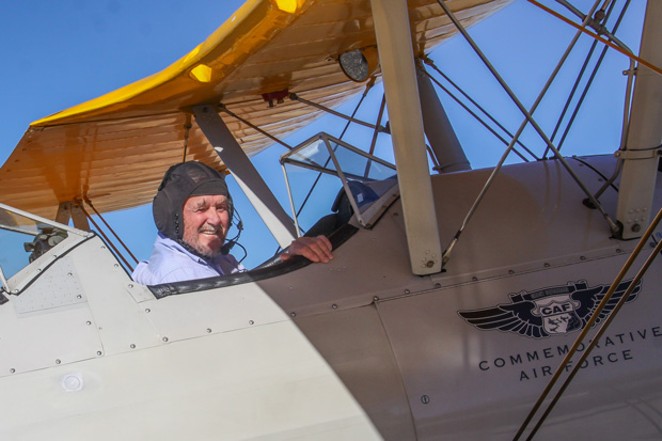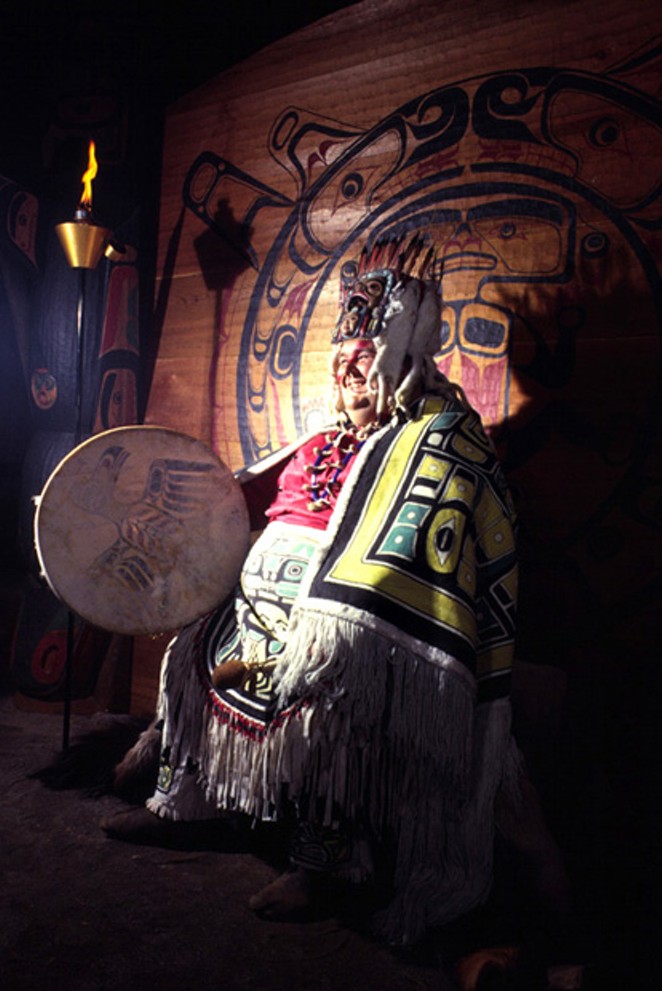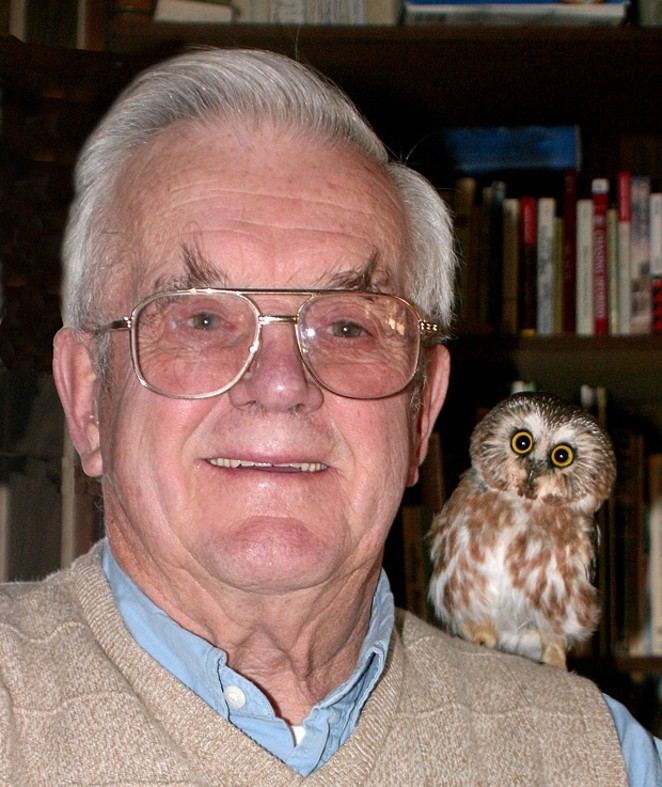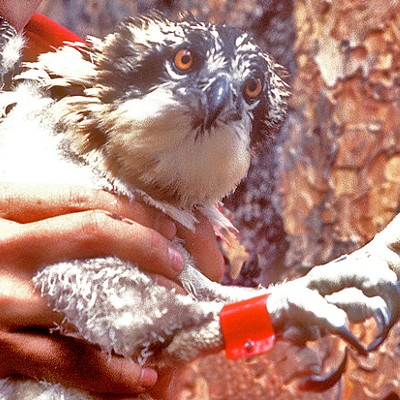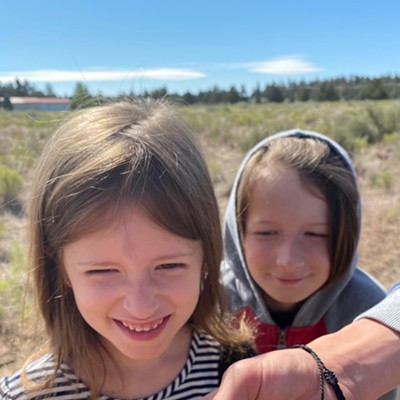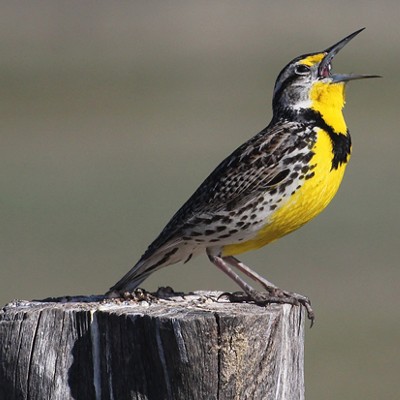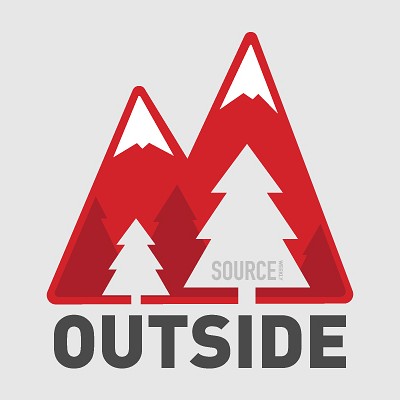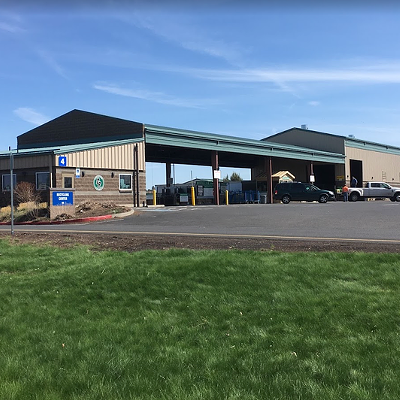Our old and dear pal, Pete Seeger, took what I want to say right from Ecclesiastes 3:18, and made it into a song, "Turn, Turn, Turn:"
"To every thing there is a season, and a time to every purpose under the heaven:
A time to be born, and a time to die; a time to plant, a time to reap that which is planted;
A time to kill, and a time to heal; a time to break down, and a time to build up;
A time to weep, and a time to laugh; a time to mourn, and a time to dance...
A time of love, and a time of hate; a time of war, and a time of peace."
My life has taken many "turns" because of the wonderful people I've met along the trail who have mentored, influenced and cared about me.
In 1945, while serving on the USS PCS 1384, my shipmates and I decided to ride the bus from Key West to Miami and celebrate my advancement in my motor mac rating. That trip was one of the dumbest things I ever did.
When I awoke behind a sofa in the Sheraton Hotel, my whites a mess and feeling like I was going to die, I panicked. When I discovered it was Sunday afternoon and I was about to miss (or already had) the bus back to the navy base in Key West, I thought my world was coming to an end. The little sub-chaser was heading out to sea Monday morning, and if I missed it that meant a court martial.
I ran to the bus stop with all I had, and lo and behold, as I turned the corner where I hoped the bus would be, not only was it still there, but the driver was waiting... on the sidewalk.
When he spotted me running, he shouted, "Hey, Andy, come on, boy, we're waitin' for ya'. I told your pals you'd make it!" I don't remember his name, but I can still see that wonderful Black man waving me on. People who care make Life worth living...
I was so fortunate to have crossed trails with so many commendable individuals who exerted great influence on my life as I stumbled along.
My first son, Dean, is named for my Oregon foster dad and mentor, Dean Hollinshead of Hollinshead Park in Bend. Ross, my second son, for a hero I met who drove an ambulance in WWI, took care of his sister all her life and collected birds with two of my birding heroes, Finley and Bohlman of the early 1900s. And another son, Reuben Phillip, for Reub Long, who wrote "The Oregon Desert," and Phil Brogan, who I'm about to tell you about.
Phil Brogan, intrepid newspaper editor
By 1959 I was a budding writer for the Bend Bulletin, under the guiding hand of my mentor in geology and newspaper-writing, Phil Brogan — another person who cared about people — author of "East of the Cascades" and hundreds of stories for the The Bulletin and The Oregonian.
Brogan and I became pals shortly after I rolled into Bend in 1951 on my trusty 1947 Harley. I became a powder monkey for Bill Miller—another man who cared about people—in his pumice mining operation west of Bend.
I was continually discovering volcanic "things" that completely mystified me as my working partner, Darrel Stevenson—another of those people who cared—and I were drilling blasting holes in the volcanic ash overburden concealing the pumice Miller was after. Consequently, Brogan became my walking and breathing geological encyclopedia and enriched my life beyond description.
In the long years we were pals, Brogan also discovered something about me I didn't know: I was looking for something more fulfilling. Chasing coyotes, owls and eagles wasn't quite enough; I needed another dimension.
He pushed me into writing. But not being trained, it was difficult for me to dot the i's and cross the t's. I can still recall one incident: Brogan had given me the task of writing what "cub" reporters called, "the police beat."
I was working hard on the piece, pounding away one finger at a time on the typewriter, (the same as I do today with my faithful MacBook) trying to make sure I was doing it write (pun intended), when Brogan came up behind me.
He stood there looking over my shoulder, then, with a soft sigh, reached over, pulled the paper out of the old Royal, sighed again and said, "A naturalist you are, but a reporter you ain't (sic)," and with pencil in hand, sat down and began to edit what I had typed up (write or wrong)...
But he never let up, and slowly the words I put on paper began to mean something. He gave me more to do and seemed to be more satisfied with the results that opened more doors for me.
I can still recall the congratulatory call I got from him in the mid-'60s when The Oregonian published my first nature column, about the arrival of snowy owls in Portland.
Pat Gibson, airplane doctor
And then there was Pat Gibson, flight instructor, airplane doctor, and Fixed Base Operator at the Bend Airport. There isn't room enough in this paper for me to share all the events in my life he helped me get through, from purchasing my first Cub to getting me to my FAA Commercial, single-engine pilot rating.
He went with me on my first cross-country flight. We had gassed up my old Korean War-surplus Piper Cub, and Gibson had settled in the canvas backseat. About an hour into the flight he suddenly smacked me on the back of my head with his chart board and shouted, "Where did you say we're going?"
Rubbing my sore spot, I shouted back, "Weed, California!"
To which he responded, "OK, but we're going to have to gas up in Burns!"
Yes, throughout my entire flying career I was always lost—except for the time I spent most of the day in a WWII Schweitzer training sailplane, achieving my five-hour soaring badge.
At 4 hours, 45 minutes into the flight I was at 12,000 feet above sea level over Brothers. I couldn't believe it, but a huge, adult female golden eagle pulled up alongside me. I thought she winked at me and shouted, "Nice going!"
Discovering OMSI
In those wonderful life-changing times, Brogan asked me if I wanted to accompany him to Camp Hancock where he had been asked to give a "Sermon on Red Hill," a lecture on Central Oregon geology. I had no idea what Camp Hancock was, or where it was. But I soon discovered it was operated by the Oregon Museum of Science and Industry, and was located right near the John Day River. What a trip! All the way from Bend to Hancock, Brogan was busy pointing out volcanic and ice age wonders.
I fell in love with everything about science, geology, education and OMSI. Brogan and I did a picture page for The Bulletin about the camp, which eventually led to my becoming the staff naturalist, teacher and busdriver for the museum for six magnificent years.
Chief Lalooska, master storyteller
On the last Saturday of each month I would take the old OMSI Ford bus, the "Space Cruiser," fill it with children and a few adults and deliver them to the train station in Portland.
Once everyone was on board, I'd drive on up to Woodland, Washington, greet the train as it pulled into the station, reload the kids and adults and then hustle on up to Ariel, Washington, where we'd enter the land of the Pacific Northwest Indians inside the Long House of legend keeper and woodcarver, Chief Lalooska.
Little did I know how much that masterful storyteller would impact my life, and those near and dear to me.
While at OMSI I met and married a snazzy science teacher and we produced two wonderful boys who have grown up as U.S. Air Force fighter pilots with kids of their own. We became a regular fixture at Chief Lalooska's, aka Don Smith's home, who was a transplanted member of the Cherokee Nation who took up residence in Ariel.
Smith became enraptured with the lifestyle and art of the Pacific Northwest Nations and took upon himself to learn all he could about their culture. He then obtained permission from the Northwest People to tell their clan ancestor stories in the Long House, using art creations he carved and created.
Pacific Northwest frogs, bears, birds and their spiritual connection to The People became the subject of his thrilling stories in a way that helped my writing and also carried me into another life of appreciation of nature.
One subject kept coming up: The Great Men of the Mountains, aka Sasquatch.
One night, after a delicious dinner and games, Smith got started with his Sasquatch stories and noted my inattention. With a very serious look, he asked, "You don't believe in the Big Men of the Mountains...?"
I hemmed and hawed, not wanting to get myself into hot water or hurt Don's feelings, when he interrupted me, saying, "You love birds, don't you? You study them and photograph them?"
I responded that I did. He then asked, "You've heard birds singing at night?" I answered that I had. Then, without hesitation, he whispered in my ear, "Those aren't birds," and spoke louder, "Those are the Big Men of the Mountain, and that's the way they communicate."
At that moment, my brand-new, sometimes boisterous young son Dean began to complain so I placed him in one of those newfangled baby backpacks and went for a hike.
Dean had quieted down as I sat down on one of the stumps overlooking Cougar Reservoir on that beautiful, quiet, moonlit night. Suddenly, right behind me, I heard (what I thought were) two birds talking to each other, twittering about this-or-that.
I could feel the hair on the back of my neck standing straight up and a funny feeling came over me—so much so that I scampered down the hill, right to the front door of the Smith home.
As I stepped into the house, the first person I met was Smith, who looked at me, grinned and said, "You heard them, didn't you?"
Dorothy Cale, recaller of history
After my stint with Sunriver in the early '70s, helping to make their incredible land-use planner, Bob Royston's "Ecologium" into the Sunriver Nature Center, came Dorothy Cale of Bend.
She hired me to take on the job of editor for her column, "Confidentially Yours," focused on historical tales of early Bend. I had the honor of meeting and writing up stories of early history makers. Additionally, I wrote for Eastwind, a monthly paper published by Jeff and Vicki Hill — more stories of people who led incredible lives in times past. Oh, what a grand time that was!
Then, surprises of surprises, Vince Roth, my spider professor in Arizona, talked my wife, Sue, and me into coming to southeast Arizona to run Ramsey Canyon Preserve, in those days known as the Hummingbird Capital of the U.S.
That's also where our son, Caleb got his middle name, Carroll, for Carroll Peabody—a conscientious giant of a man who once owned Ramsey Canyon and didn't want to see it developed. And our daughter, Miriam got her name from Miriam Tefft, an extraordinary teacher.
We moved back to Oregon in time for me to kiss my old pal Dean Hollinshead goodbye when he went out among the stars.
A Central Oregon nature columnist
That was quickly followed by Eric and Kiki Dolson of Sisters' The Nugget coming into my life. I started writing a nature column, which is still going on today.
To say that my time with Eric Dolson was instructive would be a gross understatement. He would frequently ask, "Got a minute?" and then give me another lesson on writing, especially the use of the article, "the." And now, current editor-in-chief, Jim Cornelius, does the same, ready to guide me along.
In the late '90s, at the encouragement of Publisher Aaron Switzer, I began writing for the Source Weekly. I tapped out tales about all the creatures I was interacting with in the world of sagebrush, forests, caves, lakes, sky and rivers of Central Oregon.
And what a wonderful time I've had doing so over these past 25-some odd years—especially with the help of current Editor Nicole Vulcan and her team. Incredibly, I'm still getting responses for stories I wrote decades ago that have gone out into the vast world-wide internet.
Making grandpa proud
All these patient caring people (and so many more) have made me what my grandfather called, "A Success." During the early part of WWII, I'd go with him in his horse-drawn wagon from the farm we lived on into the town of West Haven, Connecticut to sell produce and dairy products.
One afternoon I happened to come upon him sitting at the kitchen table counting the money we'd collected. He looked up with a bunch of coins in his hand, smiled and said, "By golly, Jimmy I'm a success; I'm doing what I want to do, doin' it the best I can and gettin' paid for it."
And that, dear readers, became my goal in life, to be a "Success"—which I think my writing contributed to, with lots of help.
But now, although I still have a lot more stories in my head and heart, I'm preparing to leave my home here of many years and with my wife of nearly 50 years, to join our son, Caleb, and his family in Eugene, where sooner or later, I'll go out among the stars.
So long, dear readers. I've sure enjoyed our time together. Thanks for all you've taught me and I hope we'll meet again somewhere pleasant and relive the wonderful times we've shared on this grand old Earth, our home away from Home.
The World's all right; serene I sit,
And joy that I am part of it;
And put my trust in Nature's plan,
And try to aid her all I can;
Content to pass, if in my place
I've served the uplift of the Race.
Truth! Beauty! Love! O Radiant Day —
What ho! the World's all right, I say.
—Robert Service

